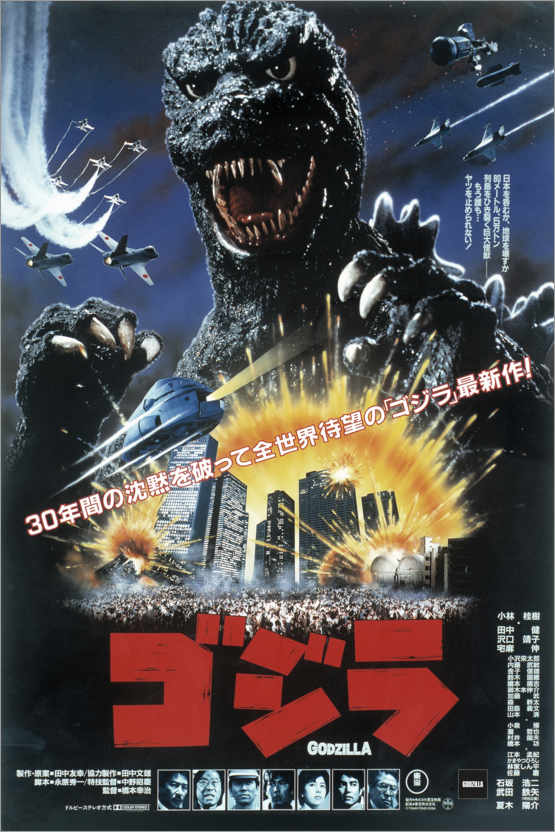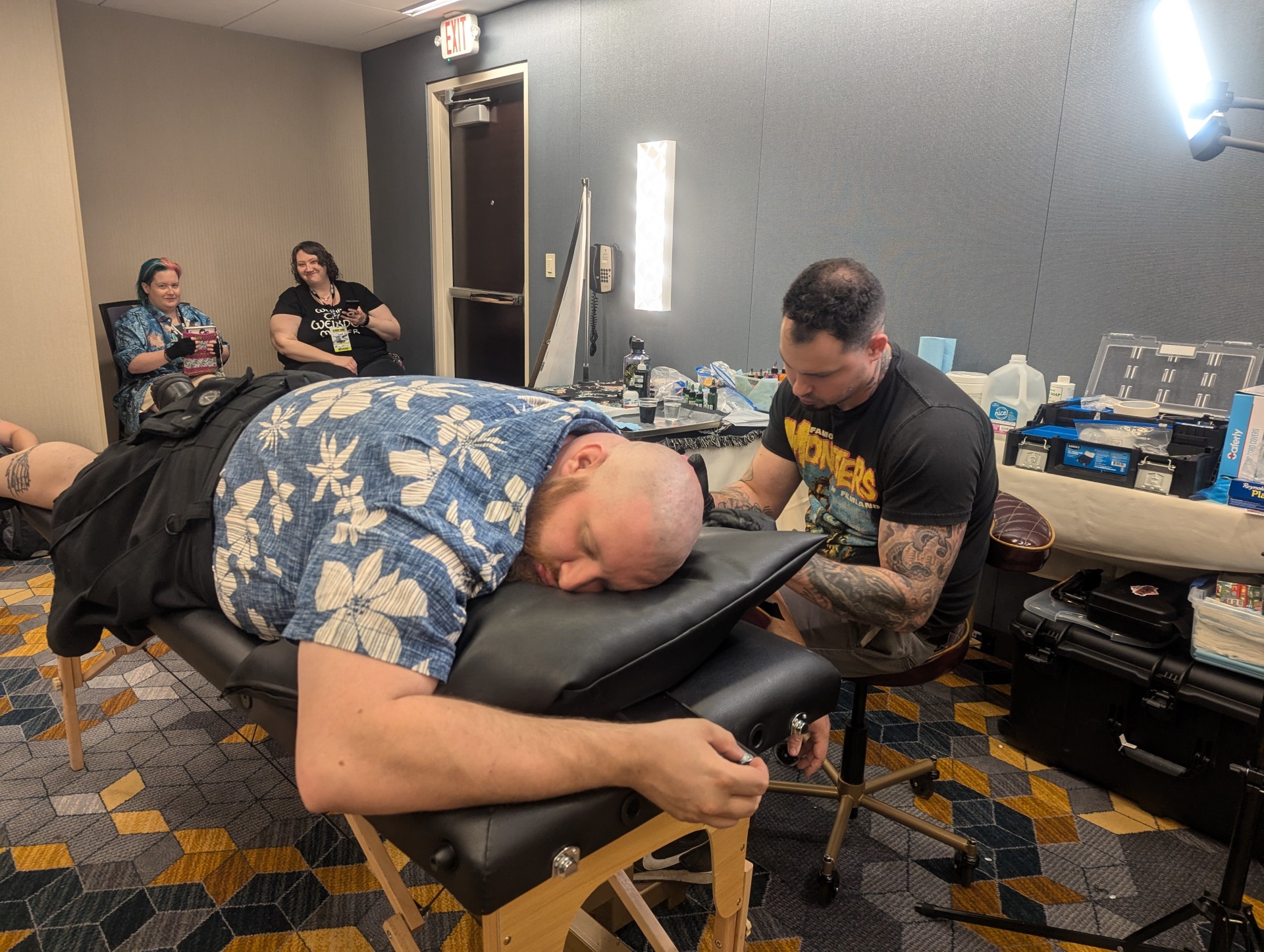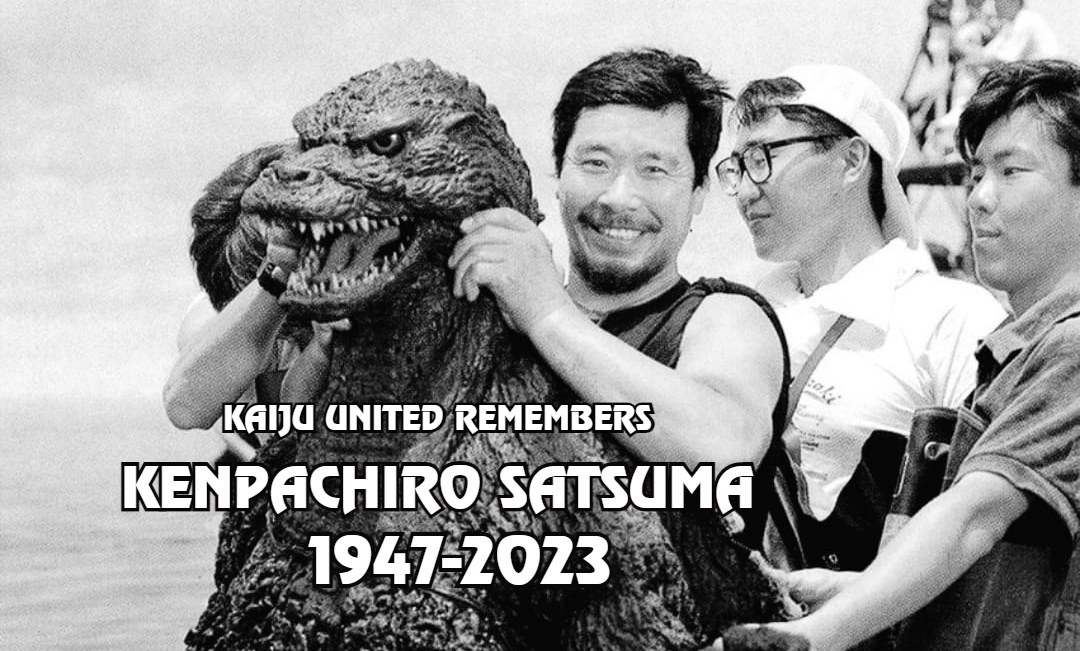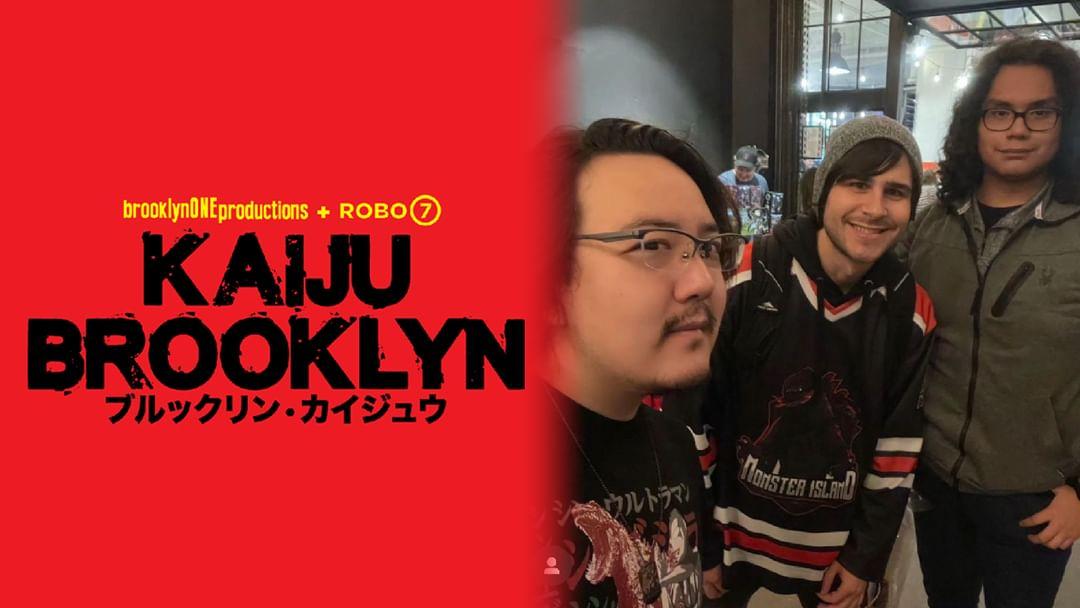1978 — 3 years have passed since the last entry of the Godzilla series and with the tokusatsu medium starting to dwindle away in ratings as a result of the massive success of films like Star Wars, there was still a desire in the back of Tomoyuki Tanaka (the head producer of the Godzilla films since the original) to bring back Godzilla. The medium that the original Godzilla had created had been fading out in popularity and ratings due to the rise of the Hollywood Blockbusters of George Lucas’ Star Wars (1977) had made the public sour on the Tokusatsu medium and thus franchises like Ultra, Rider, and Sentai struggled to keep their audiences attention by expanding into bringing in more sci-fi/fantasy heavy elements to various degrees of success. But despite this, the love and passion fans had for Godzilla had been what drove Tanaka to really push for Godzilla’s return.
So, assembling a conference with names such as Ishigami Mitsushi, Shirai Yoshio, Toyama Akira, Masashi Nishikawa, Kenichiro Tsunoda, and Yoshimitsu Sakani under the banner “Godzilla Revival Conference” to come up with how the return of Godzilla should be handled. Scriptwriters such as Shinichi Sekizawa, Taku Mayumura, and Ryu Mitsuse were ordered to draft proposals for these ideas. The initial script that combined a lot of these ideas was written by Ryuzo Nakanishi in fall of 1978 with ideas such as another revival of the “Bride of Godzilla” in which Godzilla would encounter a female member of his species (an earlier draft proposed to keep the robotic woman concept, but was dropped in the second) and even in a third draft an offspring of Godzilla would appear. Around this time, Henry Saperstein of UPA Productions requested a joint production between the US and Japan (like what had been done with Invasion of the Astro Monster (1965), Frankenstein vs the Subterranean Fire Monster Baragon (1965), and Frankenstein’s Spawn: Sanda vs Gaira (1966)). Scripts in both the Japanese and English language were made, it had seemed that the Revival of Godzilla was getting somewhere. The initial script was said to have Godzilla appear in New York and was considered “a mess of a script”, and thus was rejected. This essentially ended the UPA/Toho “Revival of Godzilla” film, leaving the resurrection of the kaiju to lay dormant for a few years.

Of course, we know that by 1983 there was another plan going about for an American Godzilla film by Steve Miner of Friday the 13th Part III fame which had seen funding issues across the board in its attempts at getting off the ground. And with the induction of the “Godzilla Revival Prosperity Committee” in December of 1983, Miner and co figured this was the final nail in the coffin for getting this “new American Godzilla” off the ground. But back to the committee, which would see prominent faces of the Toho Eiga in the forms of:
– Jitsuzo Horiuchi who was in charge of sales, film coordination, and was the chairman of the committee.
– Tomoyuki Tanaka, vice chairman
– Eiga Kogyo as Chief Secretary
This is the team that would be essential in finally getting the project off the ground, but what good was this team without having a screenwriter to pen this revitalized project? Enter Hideichi Nagahara, who had previously worked on The War in Space (1977) with Ryuzo Nakanishi. Nagahara had written the script with the direction of Tanaka to “bring Godzilla back to his roots”, which was to have Godzilla represent something greater than the heroic figure of his previous tenures. At the time, the US and USSR were still amidst the Cold War despite the gradual thawing out due to the relations between Ronald Reagan and Mikael Gorbachev. So Nagahara decided to pen it with the anxieties Japan had as an allied power as it is put into the forefront of the Allied and Warsaw tensions when a monster of indestructible force awakens, and how would Japan tackle these two matters of two superpowers wanting to prove their superiority and a new Godzilla when they collide into one.
But what about our director? For Tomoyuki Tanaka, the only person he had in mind was Ishiro Honda as he knew Godzilla as much as himself, Tsuburaya, and Ifukube did. Around this time, however, Honda was more fixated on helping his longtime friend and collaborator Akira Kurosawa with his films and had been content to move on from Godzilla after Terror of MechaGodzilla. When approached with the offer, Honda rejected it as to him “Godzilla no longer belongs to me, he must be passed on to the next generation”, however, Honda did pass a name onto Tanaka that would cement the future of the project: Hashimoto Koji. By early 1984, Koji Hashimoto had directed his first feature film Bye Bye Jupiter which did not perform to expectations (remember this film for later) but did show Hashimoto could be capable of taking the reigns. Previous to this film, Hashimoto had been the assistant director to many of the primary directors of the Toho Tokusatsu library such as the aforementioned Ishiro Honda, but also Akira Kurosawa and Shiro Moritani. Hashimoto understood the huge task that was placed upon him by being put in the director’s chair that was once held by his mentor, and having an idea of what Tanaka wanted and even furthermore having similar ideas to what Nagahara had in mind with how to bring Godzilla to the modern climate, he and Nagahara set to work on the film. Tagging along as the assistant director was Takao Okawara, who would later take the helm of directing Godzilla films starting with Godzilla vs Mothra (1992).

But we have now hit a point in the franchise where it was recognized that Godzilla was now a central character, and not just the plot device meant to drive a plot along. So Tanaka brought back Champions Festival era head sfx director Teruyoshi Nakano, Nakano had seen a few project post-Terror of MechaGodzilla when he headed the SFX sides of Magnitude 7.9 and War in Space. Nakano, given the opportunity to bring Godzilla to life once again with modern technologies, took the project on with a grander scope in mind for how to tackle the important sequences now with the budget to invest into the innovations such as the suggested cybot which stood around 15 feet tall and was made with a full sized and waist up model to make more intricate shots (ultimately many of which were not filmed, despite Toho’s plea that it was in 70% of the screentime).
Godzilla was designed by Noboyuki Yasamaru and Nakano’s team constructed a maquette to use as a basis for the modelling teams. The team began built a 1:1 scale Godzilla foot for close up shots as well as a whole leg for other shots, a prop consisting exclusively of Godzilla’s back for the swimming sequence when he approaches Tokyo Harbor, and two brand new Godzilla suits used for the stage and pool (the Sea suit would have its sequences shot first, and later used for refurbishing the 84Goji land suit). Godzilla was painted in an pine smoke ink, per Nakano’s request as it would create a more striking contrast to the grays of the skyscrapers of Tokyo and the dark voids of the night sky.

Contrary to popular belief, Ken Satsuma was not the initial actor brought on for Godzilla, this honor belongs to Hiroshi Yamazaki. Unfortunately, Yamazaki had to leave the role last minute before proper fitting could be made. So, Satsuma was brought on to play Godzilla in both of his suits and recalled it being “hell to work in” and only could film 10 minutes at a time. One of the crews who helped Satsuma in and out of the suit and also being mentored under Nakano at the time was Shinji Higuchi (Kaneko’s Gamera Trilogy, Attack on Titan Duology, Shin Ultraman) who had previously done work on Bye Bye Jupiter. Higuchi was on set most of the time and even recalled the troubles the cybot gave the team when they were filming shots for it. He also recalled that they had to discard a lot of the Showa era props to make room for them, these included things such as the Atomic Heat Ray Gun from the original Mothra, among others. One photo that had been uncovered for the Godzilla 1984 Completion Book showed that the original Mothra imago puppet that was used in Mothra and in its appearances across the Showa Godzilla era may have also followed this fate, as the picture included just her head.
To a first time viewer’s surprise, Godzilla was not alone in the film; as to establish the new threat of Godzilla and to add a dash of realism was the inclusions of the Sea Louse or Shockirus, originally there was set to be multiple Sea Louse in the film but due to budgetary and potentially pacing they were removed from the film. However, the novelization and manga also does include some of the earlier ideas of having the death of Okumura’s crew be showcased or the attack of the fishing village by these creatures.
When it came to the casting of the human side, young and rising actors such as Shin Takuma, Ken Tanaka, and new upcoming actor Yasuho Sawaguchi (who had been hand picked by Toho from their Cinderella Contest that same year, and also was said to have been a bit difficult on set due to her inexperience and her accent but Hashimoto gave her plenty of leg room to see the reels and point to areas she wanted to reshoot for) to play the audience POVs, while veteran actors such as Keiju Kobayashi (Sanjuro) and Yosuke Natsuki (Three Giant Monsters: Battle for Earth) rounded the central cast out. As we all know, Natsuki was chosen due to Akihiko Hirata (Godzilla, Ultraman) falling ill and unable to accept the role of Doctor Hayashida, but, he did do a short promotion where he revealed the film to the public while donning an eyepatch, and Natsuki has gone on record saying if he had known this beforehand he would have turned the role down due to the upmost respect he had for Hirata. In addition, there was inclusion of international actors like the classic Showa films directed by Honda to keep in line with the film’s themes and period. The international cast ranged from American to Aussie to Spanish, resulting in difficulty on set for communication but there was a dialect and language expert of Ukranian Russian for the film present to help the Soviet-role actors to fit into the roles smoothly.

Filming was described as a lot of fun according to much of the cast, and especially director Hashimoto, but there was some clashes when it came to the inclusion of the new military vehicle/fighter the “Super X” as Hashimoto found this to be too “unrealistic” and rather preferred if they used the F-15 Eagle or the F-1s, and even requested they’d use straight missiles instead. A lot of the special effect side of shooting consisted of the aforementioned cybot difficulties, but also the consultations of physics and geologists for how buildings crumbled, what would be an ideal place to trap a creature of Godzilla’s stature, and the location scouting also contributed to being able to find the best places for this. On the side of the short times the film has the international actors, many of them found working with Hashimoto to be quite an enjoyable ride and the “stick to schedule” attitude he had. Of course, when it came to some of the stunt work they had to do most, if not all, in a single take.
Dennis Falt recalled that the “sinking” sequence of the Soviet sub was done in two takes, as the crews didn’t have more than one camera to shoot at multiple angles at a time. There have been a few publicity photos released around the time that some fans considered part of lost media or alternate versions of scenes (a publicity photo has Okumura, Maki, and Naoko in the destroyed city running for example) but this was simply not the case, just photos taken of more of the central three cast together. The film ended up exactly as Hashimoto and co. intended, with little deleted scenes that were felt to be necessary to the picture.

On Nakano’s side, filming went fairly well with the occasional surprises here and there such as when Nakano accidentally inhaled the fumes of the crater for Mt. Mihara (which was hydrogen chloride) and passed out, but filming resumed soon thereafter with a telephono lense used and Godzilla’s tail being stuffed with a futon dryer to dry it out in a similar fashion to nail drying (according to Higuchi) which made keeping it in the stiffened pose we see as Godzilla plunges to his demise in Mt. Mihara an easier task.
Like with the search for director, Tanaka had a similar experience with scouting for a composer. Naturally he returned to Akira Ifukube, who had to turn it down due to his commitment to the school he was teaching for. For many years, fans had jokingly said that Ifukube didn’t want to compose for it because of Godzilla’s height being far beyond what he was familiar with and for a while this was a popular misconception among the fandom. Unlike with the Honda approaching, Ifukube did not pass a suggestion of who should compose the film, it was the head of the Toho Pictures subsidiary that suggested Reijiro Kuroku to compose the film and approached him himself after seeing his name in the credits for an anime airing around the time his kid watched.
Originally, Tanaka suggested giving a modern take on the original Godzilla score, but Kuroku decided this was not possible and went with making his own stamp on the film, with writing for the soundtrack taking place over a period of around four days. For the score, Kuroku used acoustics and brass as his main compliments of the scenes, making sure the loud “thumps” in the composition would invoke Godzilla’s arrival and help tell the story rather than in service of it. Kuroku wanted to avoid using synthesizers which were a large staple of many tokusatsu at the time such as the Metal Heroes series and soon the Super Sentai series. The only usage of synths came in form of the one Hayashida used to produce the bird calls and additional music for trailers.
Post-Production finished the week prior to the film’s release, with additional touchups done prior to the film’s screening. Compositing of shots and the visual effects departments was innovated by 1984 in many areas across the entertainment industry, so more complex and more flashy looking visuals could be produced (such as the atomic heat ray) or the shots of people in the foreground for certain long shots being able to be produced in a fashion without the fuzz of entries prior. The film was shot in native 1:85:1, the first since Godzilla Raids Again (1955) which really gave it a true “return to form” aura surrounding it.
Marketing push was the largest for a Godzilla film at the time, likely exceeding that of King Kong vs Godzilla in terms of the number of posters, merchandise, ads, and newspaper promotions. The film also coincided with Bandai’s new toyline “Godzilla Collection” which included a figure based off of the cybot. Speaking of, the cybot despite the issues on the set served to be a huge benefit to the marketing team. Godzilla’s cybot found itself at the center of being promoted all across major Toho theaters, and on December 15th 1984: Godzilla had returned; and despite the stiff competition at the time, pulled a moderate box office success. However, it didn’t pull as much as Toho had hoped. Godzilla wouldn’t see another sequel for 5 years after this in the form of Godzilla vs Biollante (1989), but we’ll get to that story another time.

The story of Godzilla (1984) is a ride that was started from the cries of the fandom for more, and as a film it succeeded for many fans for giving them that taste they had long since missed for the near 10 years since the last Japanese production. The film spawned a new era of Godzilla films and fandom, defining what Godzilla means to many and, in some ways, Toho themselves.
Big special thanks to Davis Madole for the major assistance on writing this piece, I would also like to thank Fae Basir of Fangoria for providing additional sources and Jordan Hatzialexiou for providing information on the soundtrack of the film.
Sources:
- Godzilla 1984 Completion Book; Released in 2019
- Making of Godzilla 1985; Released in 1985
- The Return of Godzilla on Toho Kingdom
- Godzilla (1984) on Japanese Wikipedia
- REIJIRO KUROKU INTERVIEW by Kaiju Masterclass




